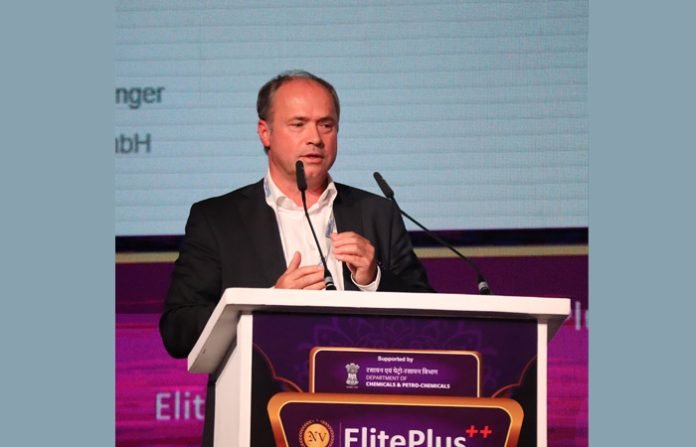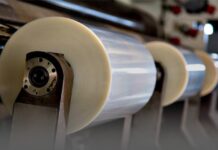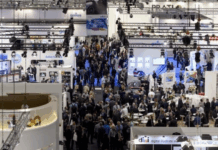At the Elite Conference in Mumbai, Wolfgang Hiesinger of Manroland Goss suggested that at a time when the entire consumer product and packaging industry is looking at circularity, there is a good case for looking at his company’s web offset Varioman as a viable option. In his presentation, he made a strong case for the carbon footprint of the technology, its operational safety since it uses inks without VOCs, the proven high quality of offset color reproduction, and its cost-effectiveness.
In his short presentation, Wolfgang Heisinger explained that Manroland Goss has been a market leader in the printing business for 175 years, although most of its more than 3,000 machines installed across the globe are meant for commercial and newspaper printing. The company has a long history in India with customers, including major dailies such as the Times of India and the presence of its own sales and service organization.
Heisinger explained that the company has been developing web offset packaging presses for several years and that while the challenges in packaging are more than just printing – when considering circularity, the principle of offset technology for flexible packaging is good for the environment. He suggested that the priority for creating a circular economy should be to avoid and reduce material consumption, waste, and emissions.
Accepting that he was speaking to experts in gravure and flexo, he explained that web offset with EB curing inks means no VOCs and that EB inks have no photo-initiators – they are safe to use. He contrasted EB curing as opposed to drying by hot air in gravure and flexo, and their consequent high energy consumption.
Additionally, offset plates are quickly made, with 100% recyclability like aluminum in comparison to steel gravure cylinders and photopolymer flexo plates that are much more time-consuming and expensive to manufacture. He pointed out that offset plates do not use chrome and the cost of storage is favorable.
Since the company’s Varioman has a short web path in comparison to gravure and CI flexo presses used for flexible packaging, it has less print waste and ink consumption as well. In addition, there is no explosion protection needed and no hot air drying requiring exhaust fans or waste heat. “It’s a very sustainable printing process,” he said. “In offset, you can print without VOCs and without solvents, you don’t need drying and one of the biggest advantages is the use of offset aluminum plates that you can make in minutes. You can show the result on the press to customers in the plant in just minutes after downloading the prepress files.”
Use environment impact slide
Hiesinger went on to talk about the color quality of the Varioman because of its short web path and stable register. He showed an example of a customer project where CYMK and a substantial number of spot colors were reduced effectively to CYMK plus orange, violet, and green. “A huge advantage is in the ink inventory when you don’t have to store so many spot colors and inks.” Apart from showing samples of images enhanced by this method and the increased color gamut, he went on to show examples of smooth skin tones and gradations achieved on a daiper packaging sample.
Surface and reverse printing with EB inks
A slide showed the various recyclable PE-based monomaterial layers and structures with both surface printing and reverse printing and pointed to some of the advantages of surface printing with EB inks that have high scratch resistance. PE-MDO structures with reverse print with either EB coating or solvent-free lamination were also shown. “Scratch resistance is an advantage for direct surface printing with EB inks and reverse printing is possible also,” he explained.
Hiesinger spoke about recycling streams for paper that exist in most countries and that paper is being considered as an alternative material where possible. “Offset is long-proven for printing on paper and there are some advantages for paper-based recyclable solutions. We are all investing in shifting some flexible packaging to paper and our company is very active in this area and basic idea. Many products can be shifted to paper.”
“For shorter print runs, we have a huge advantage. When it comes to shorter run lengths, there is no compromise on very very high print quality, and we have the advantage of being able to run multiple SKUs in the same print run since the ink can be very precisely controlled in each zone in the direction of the web.”
The slide on cost comparisons per square meter across run lengths from 1,000 to 5 million demonstrated the viability of the Varioman web offset technology. Hiesinger ended by saying, “This is a summary of what offset technology can do for you, and I suggest that keeping in mind that sustainability is the future, we need to rethink our options.”










